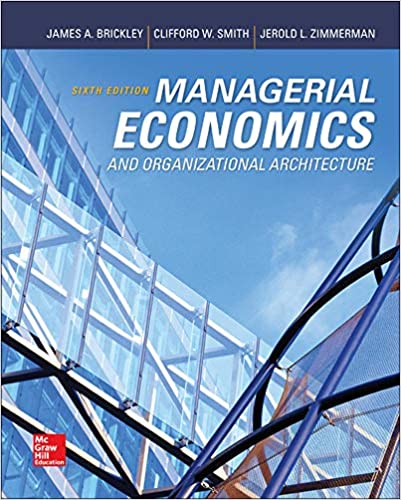
Managerial Economics & Organizational Architecture 6th Edition by James Brickley , Clifford Smith ,Jerold Zimmerman
Edition 6ISBN: 978-0073523149
Managerial Economics & Organizational Architecture 6th Edition by James Brickley , Clifford Smith ,Jerold Zimmerman
Edition 6ISBN: 978-0073523149 Exercise 17
In order to spur consumer spending in 1998, the Japanese government considered an $85 billion voucher system whereby every Japanese consumer would receive a shopping voucher that could be used to purchase Japanese products. For simplicity, assume the following: Each consumer has wealth of 1 million yen, consumers must allocate this wealth between consumption now ( c 1) and consumption later ( c 2), the interest rate is zero, the voucher is worth 100,000 yen, and it can be spent only in the current period. If it is not spent, it is lost.
a. Plot a budget line for a representative consumer both before and after the voucher program ( c 1 and c 2 are on the axes).
b. Do you expect that current consumption of a typical consumer will increase by the full 100,000 yen of the voucher Explain.
c. How does the impact of this 100,000-yen voucher differ from simply giving the individual 100,000 yen
a. Plot a budget line for a representative consumer both before and after the voucher program ( c 1 and c 2 are on the axes).
b. Do you expect that current consumption of a typical consumer will increase by the full 100,000 yen of the voucher Explain.
c. How does the impact of this 100,000-yen voucher differ from simply giving the individual 100,000 yen
Explanation
Consumption spending is the spending mad...
Managerial Economics & Organizational Architecture 6th Edition by James Brickley , Clifford Smith ,Jerold Zimmerman
Why don’t you like this exercise?
Other Minimum 8 character and maximum 255 character
Character 255


